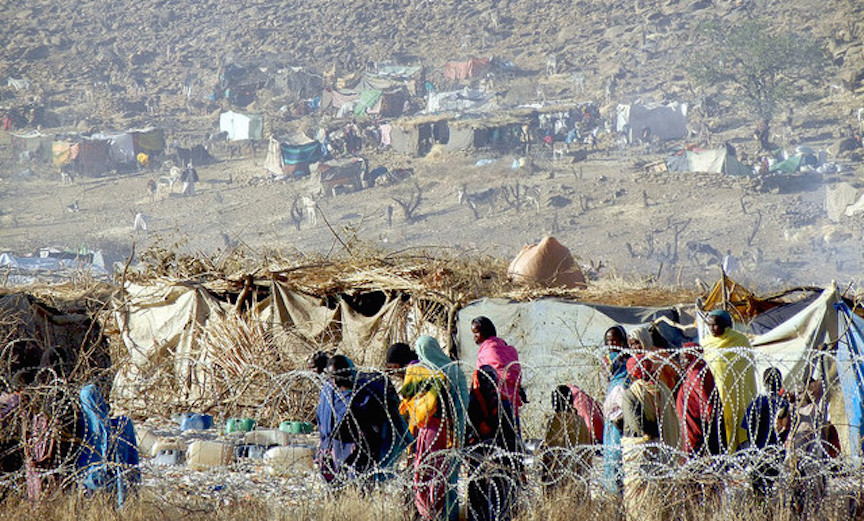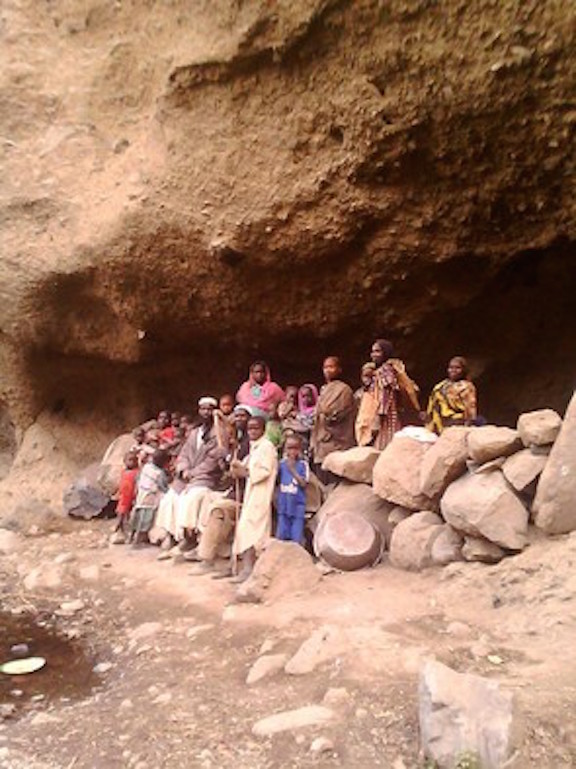Displacement in Sudan and Darfur: UN figures continue to be careless, corrupt, or inadequate
Eric Reeves | May 22, 2017 | http://wp.me/p45rOG-23o
UN figures for the number of displaced persons in Darfur have long been a source of controversy and indeed embarrassment. Under the duplicitous tenure of former UN Resident and Humanitarian Coordinator Georg Charpentier (2009 – 2011) the figure was reduced to a completely untenable 1.9 million by means of statistical distortions and misrepresentations (see Dissent Magazine, April 28, 2011). Ibrahim Gambari, head of the UN/African Union “hybrid” Mission in Darfur/UNAMID), reduced the figure even further in a wholly arbitrary and unexplained decision.
Figures for people internally displaced in Darfur should not be politicized or allowed to become dated
Although the UN eventually corrected Charpentier’s gross understatement of this critical figure, the UN Office for the Coordination of Humanitarian Affairs (UN OCHA) has remained inconsistent and presently offers in its biweekly “Sudan Bulletins” no global figures for displacement in either Sudan as a whole or Darfur in particular. Other, much less consequential (if still very important) data are reported regularly, e.g., “Refugees of other nationalities (registered by UNHCR) – as of 31 Oct 2016.” But the figures for displacement in Darfur, essential in understanding how catastrophically dangerous the humanitarian situation remains, have appeared in none of the Bulletins to date in 2017.
[Update, May 23, 2017: A document from UN OCHA (January 1, 2017) does indicate a total of 2.7 million Internally Displaced Persons in Darfur. The figure “2.7 million: estimated total no. IDPs in Darfur” appears in very small print, about one-third of the way down the one-page “Darfur Humanitarian Overview,” a document excessively dense in data that should have been presented more fully, in larger fonts, over several pages.
The document also unwisely, in misguided deference to Khartoum, provides the figure used by the regime: “2 million IDPs in Darfur.” To give any credit to a figure from a deeply mendacious regime, with a clear interest in diminishing the IDP crisis in Darfur, is all too characteristic of OCHA on this particularly important issue. This figure will be used by Khartoum to confuse logistics and the provision of humanitarian assistance once the regime begins its clearly announced plan to dismantle IDP camps.
It is unclear why the deeply important figure of 2.7 million Internally Displaced Persons does not appear in every bi-weekly issue of OCHA’s “Sudan: Humanitarian Bulletin.” The omission is disturbing, given the centrality of displacement in understanding the current situation in Darfur.]
This makes especially important a report today (May 22, 2017) from the Internal Displacement Monitoring Centre (IDMC), indicating that there were 3.3 million displaced persons in Sudan in 2016—a figure significantly different from the UN’s most recent figure (November 2016) of “up to 3.2 million as of 2015.” The significance of this disparity, given the massive displacement in 2016 caused by Khartoum’s brutal Jebel Marra military offensive, is discussed below. (Estimates of those who remain displaced by the genocidal assault of 2016 are in the range of 100,000 – 150,000 civilians; but there are quite possibly many more, since the Khartoum regime permits no assessment missions to many parts of Darfur bordering western Jebel Marra).
Many who fled Khartoum’s genocidal assault on Jebel Marra in 2016—during which chemical weapons were used against civilians—have never been counted.
Given the importance of its work, and its independence from corrupt UN political influence, we should know something about the IDMC (http://www.internal-displacement.org/):
IDMC is the leading source of information and analysis on internal displacement
IDMC was set up in 1998 at the request of the international community to fill an important knowledge gap on the global scale and patterns of internal displacement. Since then, tens of millions of people have become internally displaced each year as a result of conflict, violence, disasters and human rights violations across the world. While the numbers are rising and the needs of millions go unaddressed, internal displacement continues to receive insufficient political attention and commitment.
We offer an important service to the international community. By telling the story of internal displacement, we keep the issue and the plight of internally displacement people high on the global agenda.
What we do:
We provide credible and timely data on all situations of internal displacement worldwide.
We interpret the global data with research into the drivers, patterns and impacts of internal displacement across different countries.
We translate this evidence into targeted advice and support to inform global, regional and national policy-making.
IDMC is part of the Norwegian Refugee Council (NRC), an independent, non-governmental humanitarian organisation.
Implications of the disparity between the figures from the UN and IDMC
IDMC focuses exclusively on the rapidly growing international crises of internal displacement, an issue of particular significance for Darfur, given its immense and highly endangered IDP population. Past UN efforts to diminish the scale of displacement—represented most shockingly in the unjustified census created by former UN Resident and Humanitarian Coordinator for Sudan George Charpentier—stand in stark contrast to the demonstrated integrity and independence of IDMC.
The disparity between the two figures for Sudan total number of IDPs is likely reflected in figures for Darfur: this is where the overwhelming number of IDPs are concentrated, though it must be said that we have no accurate census for the displace populations of South Kordofan and Blue Nile because Khartoum refuses all assessment missions to the rebel-controlled areas where IDPs from these regions are concentrated.
Particularly notable is the difference in the year of record used for the two estimates of Sudan’s IDP population: 2016 for IDMC and 2015 for UN OCHA. This means that the UN has still, despite clear evidence of massive displacement as a result of the Jebel Marra offensive of 2016, not included these displaced Darfuris in its figure of record: “up to 2.6 million as of 2015.” This in itself is a shameful belatedness. IDMC gives a figure of more than 200,000 for those newly displaced by conflict and disasters in Sudan in 2016.
What makes the UN failure to have a figure for IDPs as of 2016 especially dismaying is that the UN’s own early reporting on the Jebel Marra offensive gave staggeringly high figures for human displacement. In its February 21, 2016 Sudan Bulletin—one month into the offensive—UN OCHA was already reporting: “As of 21 February, over 90,000 IDPs were displaced from Jebel Marra because of conflict, according to aid organisations.” And displacement would continue for months. Why hasn’t UN OCHA done its best to synthesize the data from 2016, now almost five months into 2017? Why is its figure of record “up to 2.6 million as of 2015”? Again, displacement in Darfur has long been our best measure of violence and insecurity: these are critical data in understanding the current humanitarian situation and the fear of return felt by Darfuris.
IDMC has not yet presented its data in disaggregated form for Sudan; but given the country context for the release of the report today, and the violence we know was the engine of such massive displacement in Darfur in 2016, a current estimate of 2.7 internally displaced persons in Darfur—scattered in a great many locations in Darfur (see below)—is the most plausible.
IDP locations in Darfur (click twice on the map to enlarge)
[ For an earlier analysis of displacement in Darfur (March 2017), see | “Internally Displaced Persons in Darfur: The invisible catastrophe, international complicity” | March 19, 2017 | http://wp.me/p45rOG-21N ]


